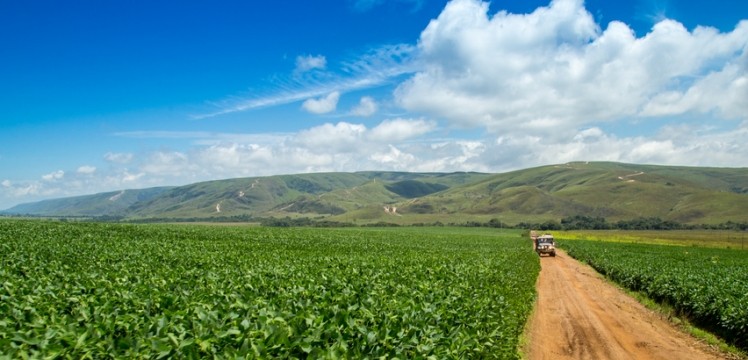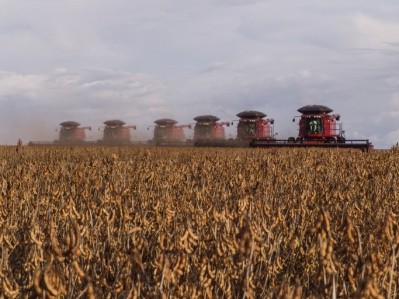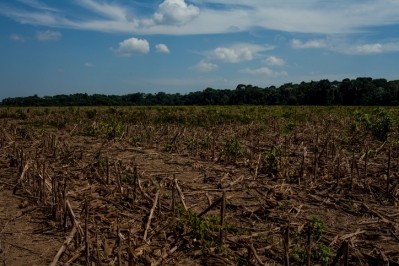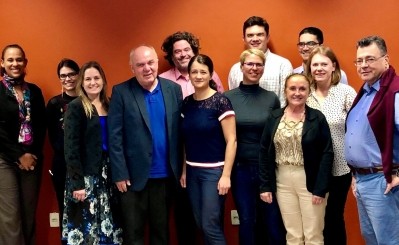The Big Interview
CGF: Mobilizing local action is key to stopping soy deforestation

The SBC, set up in June last year, comprises retailers, feed as well as food manufacturers. It works with TRASE, Proforest and participating companies, and aims to bridge the gap between soy buyers and on-the-ground producers, with a view to finding new ways to tackle deforestation linked to soy production.
TRASE maps key sourcing areas, identifying areas of collective risks, and identifying initiatives that could be helpful for companies to collaborate with.
“The theory behind what we are doing is that preventing deforestation needs to be driven by local actors, including government, civil society, and producers, while consumer good companies should support and promote these efforts on the ground,” Ignacio Gavilan, environmental sustainability director, Consumer Goods Forum (CGF), told us.
He said companies struggle to ensure physical supply of sustainable soy in their supply chains, and they saw that one way to overcome this was to engage in pre-competitive collaboration, so “jointly partnering with local players driving change in the most obvious sourcing regions where there is a risk of deforestation, contributing with political support if they are allowed to lobby, and using their collective influence to mobilize local companies, providing matching funds if they want.”
Dutch retailers like Ahold Delhaize, Carrefour in France, and UK retailers such as Tesco and Waitrose are the leaders in this space, he said, along with Walmart in the US, which is really trying to understand the issue. Manufacturers like Danone and Unilever have also been at the forefront of efforts, he said.
Investigations prompted action
The picture was somewhat different a few years back though.
The CGF, in 2010, agreed to commit to zero net deforestation by 2020, with a focus on four commodities - paper and pulp, beef, palm oil and soy. However, soy, in the main, is a hidden commodity, taken up in meat products, and, as such, had been a difficult commodity to press members on, up until 2016, said Gavilan.
“Consumers are not really pushing for more transparency on this. The average consumer does not walk into a supermarket asking about sustainable soy. So it had been a very difficult topic on which to engage members.”
Over two years ago, however, the CGF saw more interest from retailers in backing a more responsible soy value chain.
What turned the tide somewhat on this?
“I think the conversation around the extension of the Amazon Moratorium, and the fact that the likes of Mighty Earth [in its investigations on Cargill and Burger King in relation to soy sourcing] and Greenpeace started to be very active about soy, brought the commodity more to the forefront. And I think as we increase transparency and traceability [throughout the food supply chain], soy becomes an obvious one [to focus on].”
That increase in NGO pressure saw the CGF participate more fully in the wider debate, signing the statement of support (SoS) for the Cerrado Manifesto in October 2017, said Gavilan.
“That SoS put the Cerrado on the map. The leakage that happens from the Amazon into the Cerrado is very obvious. We wanted to be a force for good on this. We wanted to be sure that we sent the right signal, that the Cerrado is an area that we need to protect - most of the soy is coming from there - and that we had a problem we wanted to solve.”
Prior to that initiative, the CGF had already, though, carried out a number of steps in relation to empowering its members in relation to soy.

Mapping soy usage
Given that the tension is always between sustainability and procurement, Gavilan said the CGF, in order to alleviate that strain, developed soy sourcing guidelines for its members.
It also created the Soy Ladder in conjunction with consultants, KPMG, in September 2015 to support a company in making its soy usage more sustainable by providing them with greater insights into where that soy usage is within the supply chain and which product lines contribute the most to a company’s soy footprint.
“It is a really daunting task, you don’t know where to start, so we gave our members some indication how much soy was embedded in a steak or in a farmed salmon, for instance.”
That sort of calculation could allow retailers that might have 200k of soy in products on their shelves, to determine what they can do, whether that means working with suppliers or, if it is their own brand, doing it themselves, or finding projects that they could join.
Shortening supply chains
But there are layers in soy’s supply chain that add to traceability complexity for retailers or manufacturers with no-deforestation commitments.
“The problem is they are very far removed from the producing area. They are as good as their supplier and the supplier buys from another aggregator, and the aggregator from a trader and the trader from a silo, etc. And soy is a commodity – just as when you put petrol in your tank you don’t care if it comes from Scotland, Venezuela or Alaska, it is just a commodity.
“So [we started looking] at how we start breaking that down somewhat so we understand where soy is coming from, and that put traders on the spot. So we are trying to shorten our supply chains.
“Before it was a given thing that soy makes it to Europe – 35m tons - or to China – 80m tons- and was distributed to your egg supplier, your chicken supplier, your beef supplier and the animals were fed with that – end of story. Now you [as a retailer] have to go your supplier and ask where they are sourcing from. The first response will be “I don’t really know, I buy whatever product is cheap at different times of the year.” And then you have to start working with your suppliers, digging a bit more.”
Empowering local initiatives
Soy linked deforestation still happens, both legal and illegal in Brazil, said Gavilan.
“You can legally deforest under the Forest Code, which we are trying to avoid because there are millions of hectares of available land that has been deforested some time ago that we should be using. But it is very difficult to move a farming community into the land and get them to start using it.”
What about supporting financial incentives for Brazilian farmers to migrate to those areas?
“We are not a lobbying organization. To me, it is really difficult to go to a government and say look you need to incentivize farmers [three years no income tax, whatever] to get them to move to this area. That is a difficult discussion and we want to avoid this kind of neo-colonist style. We want to join forces with local players so they do that lobbying, not us ”telling them what to do.”
The Produce Protect Platform, run by the Mato Grosso government, a broader state initiative, is one program the Soy Buyers Coalition is backing, among others involving multiple states and NGOs.
“We work with ProForest, and with WWF on this, and other structures already working there, and we tell them they can use the CGF as a point of leverage.
“We like the members to lead on this. So far, we have a few leaders, but we need critical mass. But [a lot of members] are still understanding how much soy they have [in their supply chains], where it comes from and if they need to act."
Gavilan’s role is to continue to identify areas of best practice, and areas of risk, and to highlight other collective initiatives like the Mato Grosso project for the SBC to support, while also undetaking ongoing work with TRASE on mapping.
Making sustainable soy mainstream the norm
Making sustainable soy mainstream the norm, rather than the exception remains a big challenge, he said. “We are going against the traditional commodities model. No matter how much we work with very willing traders on the ground, there are so many small farmers, some of them doing whatever they want. Having to police every single farmer is complex.”
He said it shouldn’t be the case, but there is a perception that sustainable soy is more expensive, and there is concern over an attached premium, about who is going to cover that.
“We may need to go through a period where there are imbalances.”
Gavilan doesn’t see the extension of the Amazon Soy Moratorium to the Cerrado as workable, as the region is very different. “Land titles are sometimes really difficult to find in the Cerrado, and it looks like neocolonialism if you impose this. Collectively, we have put this area on the map, now the solution has to come from within.”












